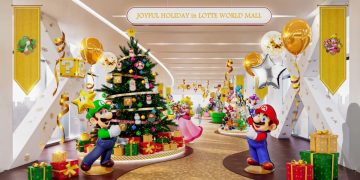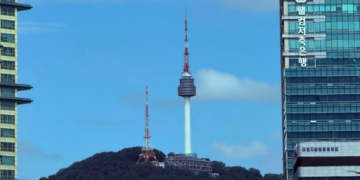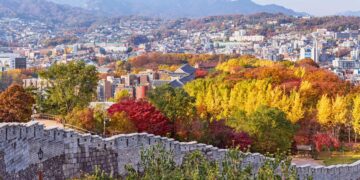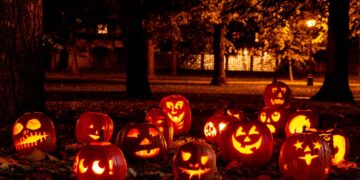Last Updated on 4 years by admin
Gyeonghuigung Palace (경희궁) is the youngest of the Seoul palaces as it was built within the 1600s. It is also one of the smallest palace complexes amongst the other royal palaces of Seoul. The name translates to ‘Palace of Serene Harmony,’ and it actually lives up to its name. Gyeonghuigung has another name, Seogwol, which means ‘a palace of the west’ or the West Palace.
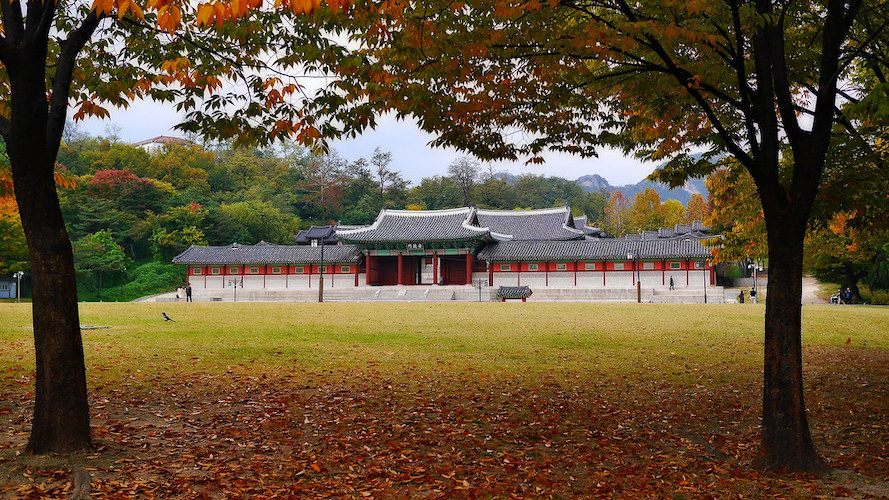
The palace is lesser-known, and its location in Seoul downtown in the almost business area makes it less touristy. The absence of tourists flocking all the time makes it perfect for travelers who like to explore rich cultures in peace.
History of Gyeonghuigung Palace
The construction of Gyeonghuigung Palace started in 1617 (completed in 1623) by King Gwanghaegun as a secondary royal villa for staying during excursions. It was a place for shelter for the royal family at times of emergency as well. For over 200 years, ten kings from Joseon Dynasty used Gyeonghuigung Palace as the primary residence. There are about 100 small and enormous buildings on the palace grounds making it a good place for working on state affairs.
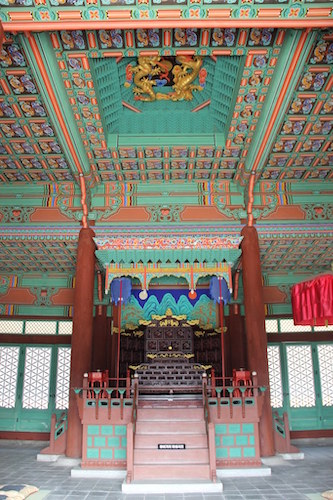
But like other royal palaces of Seoul, it also has its share of the tragic history of destruction and damage. Several buildings were burnt down in two fires – in 1829 during the 29th year of King Sunjo or during the 20th year of the reign of King Gojong. Most of the remaining buildings in the palace compound were destroyed or removed during the Japanese Occupation of Korea. Instead of the palace, a school for Japanese children was built on the location.
After liberation in 1946, Seoul High School was built on the site, and it remained there till 1978. In the 1990s, the reconstruction started under the South Korean government’s initiative to rebuild the “Five Grand Palaces” to restore the royal palaces to their former glory. But, unlike other palaces, the area meant for the Gyeonghuigung Palace was invaded by urban growth. This did not leave much space for the rebuilding project, so only 33% of the former palace is rebuilt since then.
As the palace’s location isn’t in the tourist areas of Insa-dong, it does not have a UNESCO designation. Even then, the palace is certainly worth visiting!
Things to See in Gyeonghuigung Palace
Heunghwamun Gate
Heunghwamun Gate is the main front gate of the Gyeonghuigung Palace. Its original location was the current site of the Salvation Army building facing east. During the Japanese Occupation, the gate was moved to Bangmunsa (or Bakmunsa) Shrine honoring Ito Hirobumi. He was the first Resident-General of Korea during the Japanese Occupation of Korea.
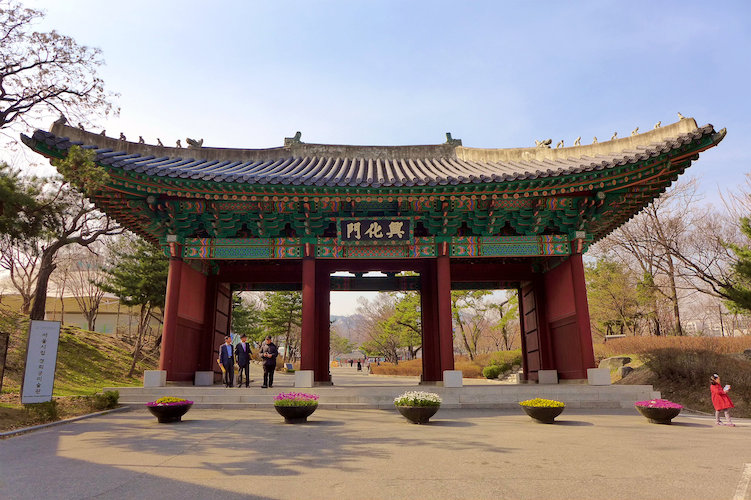
In 1988, Heunghwamun Gate was relocated to its current location in Gyeonghuigung Palace and was given the designation of Seoul Tangible Cultural Property Number 19.
There’s the Seoul Museum of History on the right of the palace’s main gate while the Seoul Museum of Art is on the left side on the palace grounds.
Sungjeongjeon Hall
Sungjeongjeon Hall is the main hall of Gyeonghuigung Palace, where the king used to hold important meetings and ceremonies. It was also the location for royal banquets and reception of foreign dignitaries. The construction of the main hall started in 1618, during the 10th year of the reign of King Gwanghaegun (ruling period: 1608-1623), the 15th king of the Joseon Dynasty. He is the royal behind the reconstruction of Changdeokgung and other royal residences.
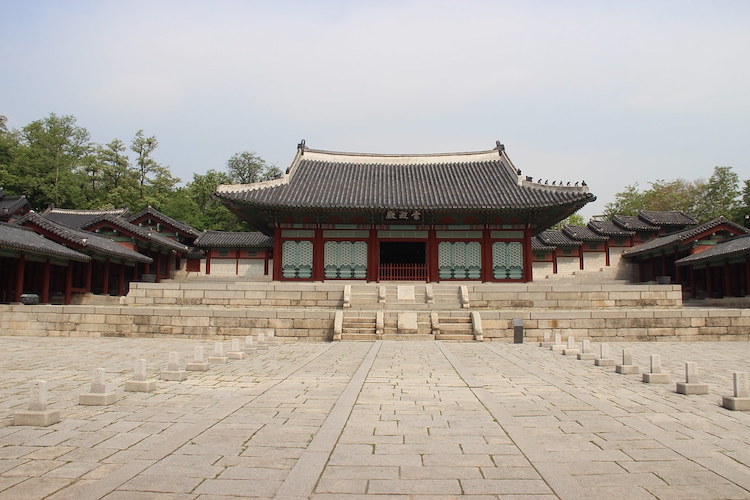
The main hall on the palace grounds is actually the replica of the original Sungjeongjeon Hall that was moved to Dongguk University. The replica was built in 1987 as the original was too old to be moved again to its original location. The original hall is now known as Jeonggakwon or the Hall of Righteous Enlightenment.
Geumcheongyo Bridge
Geumcheongyo Bridge is a stone bridge that lies across the Geumcheon stream near the Seoul Museum of History entrance. It was built in 1619 during the reign of Gwanghaegun. The stream under the bridge runs up to the Heunghwamun, the main gate of the palace. There is a goblin engraving in one of the rainbow-shaped posts. They are believed to ward off evil spirits.
During the Japanese Occupation, the bridge was buried entirely but was restored to its former glory in 2001 under the restoration project. There’s another bridge with the same name in Deoksugung Palace also.
Jajeongjeon Hall
This building was primarily a meeting hall for the king for meeting his royal council and his personal living room. After King Sukjong’s death in 1720, the hall was used as a binjeon. It is the location where the coffin of a king or queen was held in the royal residence before their burial.
Taeryeongjeon Hall
Taeryeongjeon Hall is in the back corner of Gyeonghuigung Palace and houses a portrait of King Yeongjo (ruling period: 1724-1776). Initially, the hall did not serve any specific purpose, but in 1744, during the 20th year of King Yeongjo, the building was renovated to display his portrait. This is quite unique as other halls like the Seonwonjeon Hall at Changdeokgung Palace house the portraits of past kings.
It was restored in 2000 after the removal during the Japanese Occupation. At present, there are five sections on the front and two sections on the sides.
Seoam Rock
It is a large stone formation behind the Taeryeongjeon Hall known for its unique design and the natural fountain that flows within, Amcheon. Originally, it was known as ‘Wangam’ or the ‘King’s Rock,’ giving proof to the belief that King Gwanghaegun built Gyeonghuigung Palace in this location.
The name of the rock was changed in 1708 during the 34th year of King Sukjong’s reign. The new name, Seoam Rock, means ‘Propitious Rock.’ It was one of the favorite places in the Gyeonghuigung Palace complex for the 21st king of the Joseon Dynasty, King Yeongjo.
Important Info About Gyeonghuigung Palace
Where: 1-126, Sinmunno 2(i)-ga, Jongno-gu, Seoul
Timings: Every Monday, the palace is closed, and the operating hours are from 09:00 – 18:00.
Entrance Fee: Free
Website: www.cha.go.kr
Read more about Grand Palaces of Seoul:
- Gyeongbokgung Palace – Korea’s Magnificent Main Palace
- Deoksugung Palace (덕수궁), Seoul
- Changdeokgung Palace (창덕궁) and Huwon, The Secret Garden
- Explore Changgyeonggung Palace (창경궁) – The Queen’s Palace in Seoul
- 5 Seoul palaces you must visit to add to your Royal South Korea Experience
10,313 total views, 4 views today


